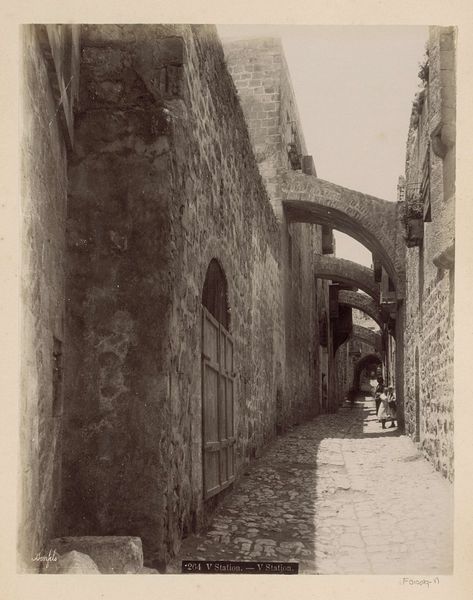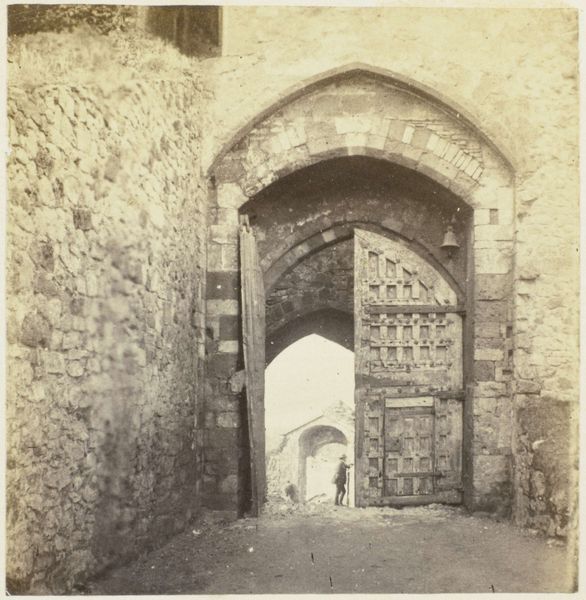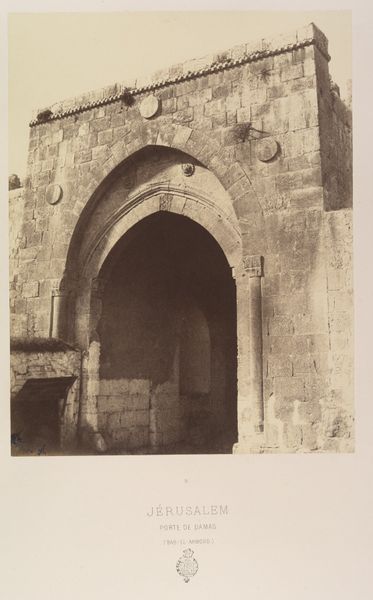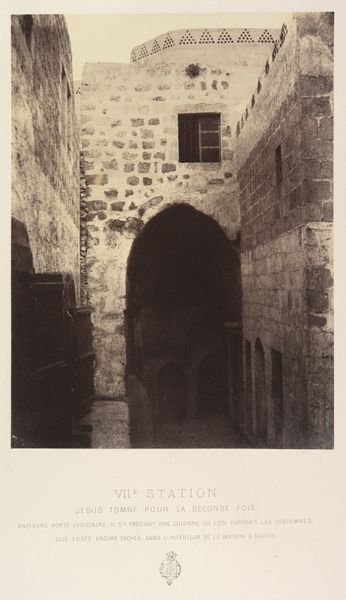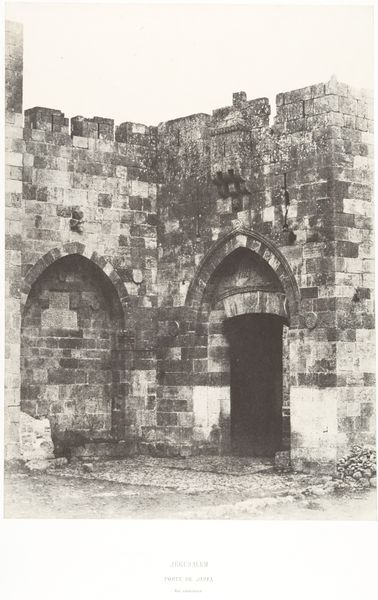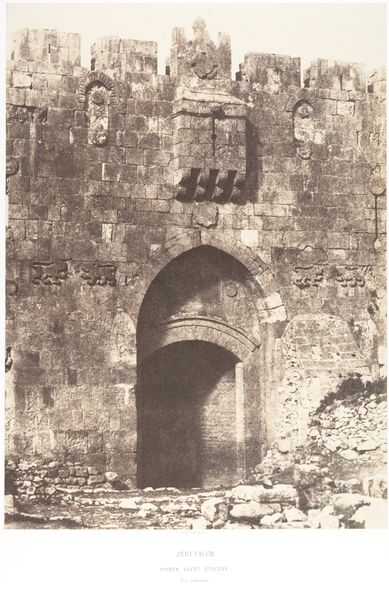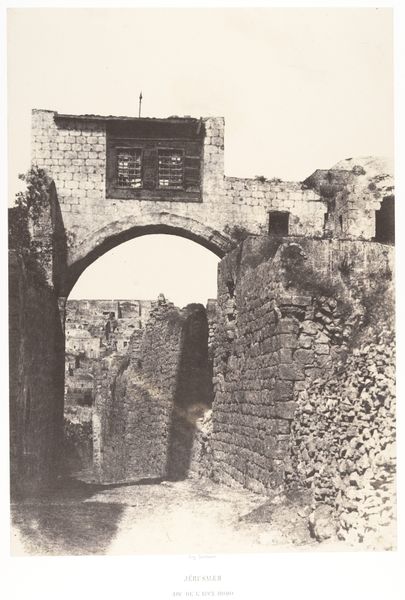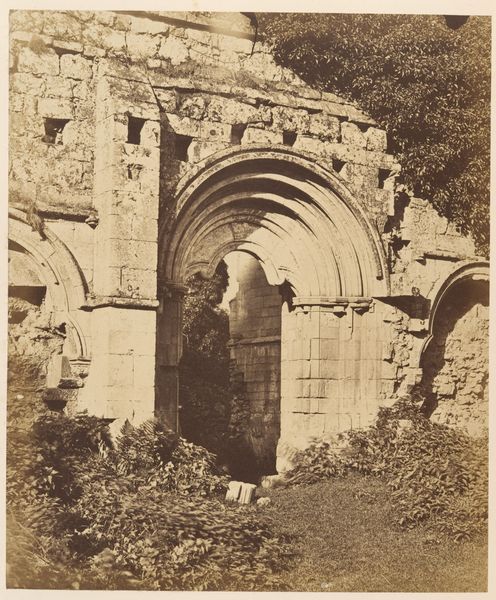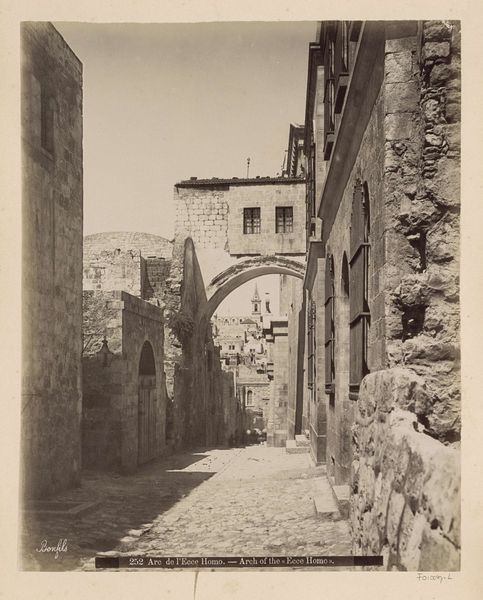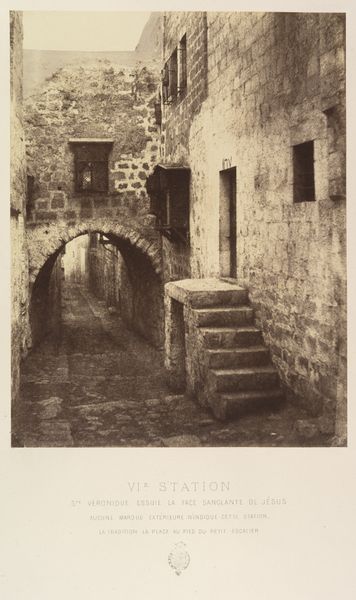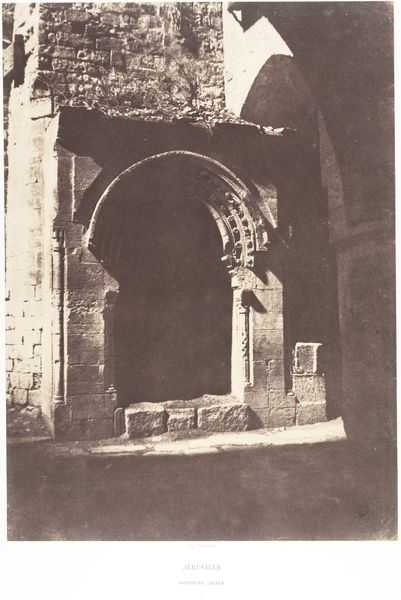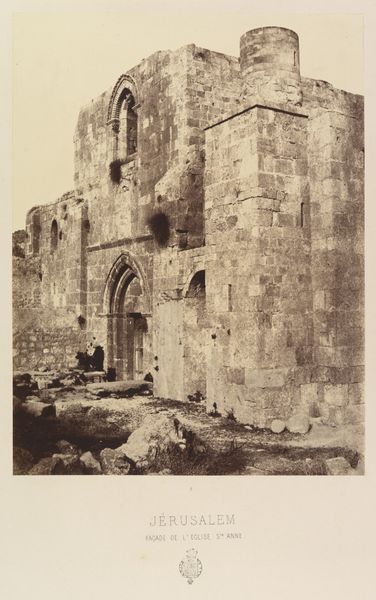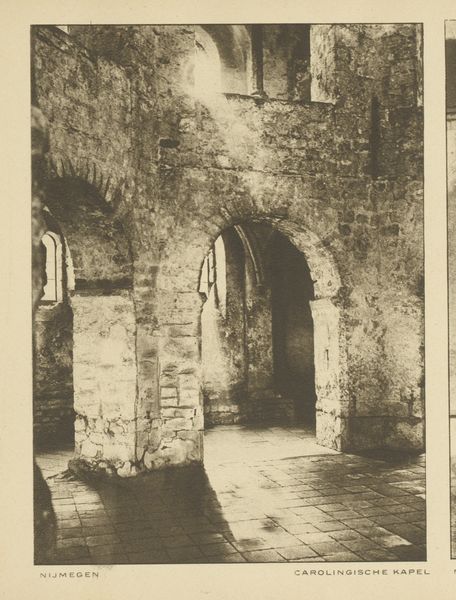
print, photography
# print
#
landscape
#
photography
#
ancient-mediterranean
#
arch
#
19th century
#
street
Dimensions: height 272 mm, width 220 mm, height 558 mm, width 469 mm
Copyright: Rijks Museum: Open Domain
Curator: Here we have Félix Bonfils' photograph, "Street with Arches in Jerusalem," taken sometime between 1867 and 1877. Editor: It feels weighty, solid. The arches tunneling into shadow create this very grounded sense of history and permanence. Curator: Indeed. Bonfils was part of a wave of 19th-century photographers documenting the Middle East, capturing scenes that spoke to European audiences' fascination with the Holy Land. This particular image presents Jerusalem as an ancient, almost timeless city. Considering its historic role and ongoing conflicts, how might the image's seeming peace complicate matters? Editor: The very act of photographing itself transforms labor and perception. The labour of quarrying these massive stones, the hands that laid them, the street sweeper... where are they in the colonial gaze? What are the mechanics behind producing images like this in the 19th century? The specific processes used - the wet collodion, the albumen prints - these techniques influenced how the scene was rendered and understood. How the labor of maintaining that ancient structure goes unseen now, but can be seen with a modern photograph. Curator: Absolutely. There is a power dynamic at play, with Bonfils, a European photographer, framing this view of Jerusalem for Western consumption. It reduces complex social structures and ancient cultural identities into digestible visual shorthand. You point out that there is the act of taking the photo and the selection and distribution behind such a product in 19th century Ottoman Palestine. Editor: The arrangement of those arches and careful composition speaks volumes about aesthetics. We see something grand created from simple material: the stone of which Jerusalem is built. What implications has that in the relationship between man and construction. Curator: For me, this photograph serves as a reminder of how deeply intertwined image-making is with cultural narratives, often reflecting and perpetuating specific viewpoints of that particular place in history, erasing the marks of labor. Editor: Yes, this reminds us to delve into the layers of production that form the image we see and not fall into romantic notions of what is presented at face value.
Comments
No comments
Be the first to comment and join the conversation on the ultimate creative platform.
